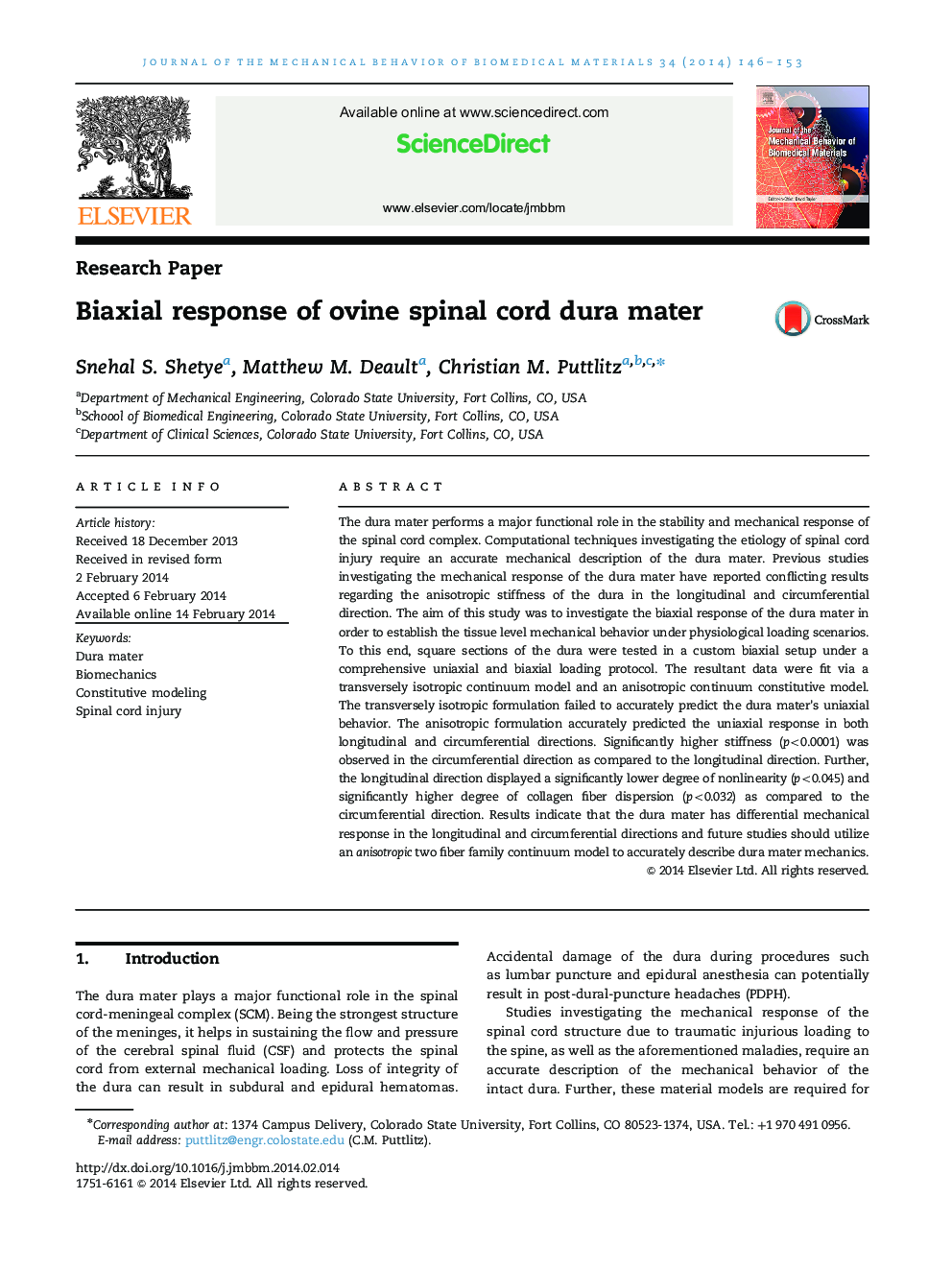| Article ID | Journal | Published Year | Pages | File Type |
|---|---|---|---|---|
| 810760 | Journal of the Mechanical Behavior of Biomedical Materials | 2014 | 8 Pages |
The dura mater performs a major functional role in the stability and mechanical response of the spinal cord complex. Computational techniques investigating the etiology of spinal cord injury require an accurate mechanical description of the dura mater. Previous studies investigating the mechanical response of the dura mater have reported conflicting results regarding the anisotropic stiffness of the dura in the longitudinal and circumferential direction. The aim of this study was to investigate the biaxial response of the dura mater in order to establish the tissue level mechanical behavior under physiological loading scenarios. To this end, square sections of the dura were tested in a custom biaxial setup under a comprehensive uniaxial and biaxial loading protocol. The resultant data were fit via a transversely isotropic continuum model and an anisotropic continuum constitutive model. The transversely isotropic formulation failed to accurately predict the dura mater׳s uniaxial behavior. The anisotropic formulation accurately predicted the uniaxial response in both longitudinal and circumferential directions. Significantly higher stiffness (p<0.0001) was observed in the circumferential direction as compared to the longitudinal direction. Further, the longitudinal direction displayed a significantly lower degree of nonlinearity (p<0.045) and significantly higher degree of collagen fiber dispersion (p<0.032) as compared to the circumferential direction. Results indicate that the dura mater has differential mechanical response in the longitudinal and circumferential directions and future studies should utilize an anisotropic two fiber family continuum model to accurately describe dura mater mechanics.
